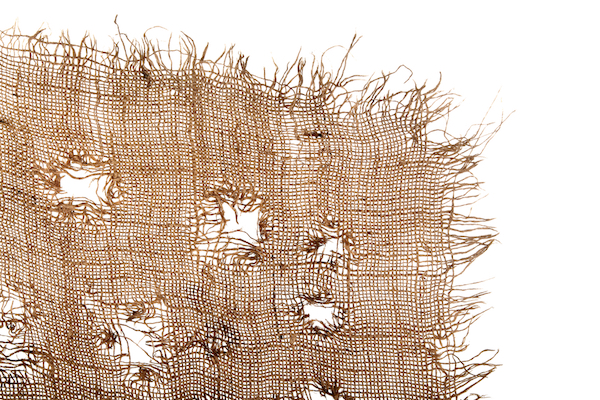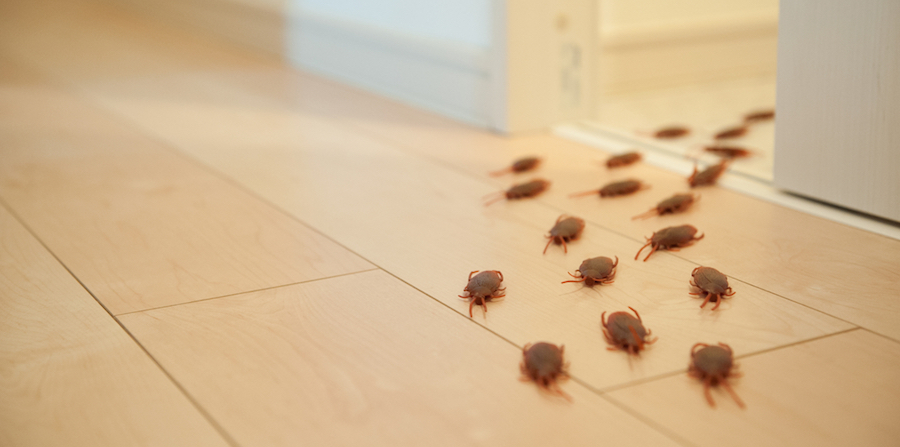Every pest infestation leaves behind some sign of the pest’s presence. Look for grime or other buildups on walls, smeared droppings, or bite damage on fabric and paper. See if you can smell strange odors in your basement, attic, or crawlspace. Check pest-prone areas consistently to look for changes.
If you can learn to identify pest infestations quickly, you can take action to remove them sooner. The sooner you can remove pest infestations, the lower the chance that they’ll do permanent damage… or spread. If you’re worried you have a pest infestation, look for any of the following four signs. The sooner you find evidence like this, the sooner you can take the next steps:

Grimy Buildup
Whatever pest infestation you have, they’re making a mess somewhere. Bugs, rodents, spiders, and beetles all prefer dark, enclosed, humid places, so start your search in the basement or attic. Look high-and-low, in corners, under furniture, along the edges of the walls, and near window frames. You might find grease stains, crumbs or other food remains, dirt smudges or even discarded hair.
Rodents, in particular, tend to familiarize themselves with set routes and then stick to them, so look for trails of grease or grime where their bodies may have rubbed off against the walls. If your floors or sills are dusty, look for trails left behind by pests moving around. Early signs like these are often subtle, so look closely, be patient, and believe yourself. It’s always better to be safe than sorry.

Droppings
It turns outs pests don’t practice great hygiene. There’s a reason they’re called “pests”, after all, and it isn’t because they’re fun to have around. Pests leave behind their waste just like everything else. Look for small droppings around the same pest-attractive areas you search for less conclusive evidence.
The type of dropping you may find will help you determine the kind of infestation you have. Rodent droppings are spindly or conical and solid. They’ll be small and may not look or smell like much of anything. Insect droppings are even smaller, but may also include shed or discarded skin, wings, or body parts. It’s tough to be a bug. Obviously, spiders make webs to catch prey. They tend to know their stuff when it comes to pest-catching, so anywhere you find webs, look for ways other pests may be getting in nearby.

Smells
Pests can produce a wide variety of smells, and pretty much all of them are unpleasant. All kinds of pests, including ants, beetles, rodents, or other bugs often carry off food to enjoy in a secluded place. The problem is, sometimes they don’t finish their meal and it begins to rot. If you smell rotting food and you can’t find it, it could be that a pest carried a piece of fruit into your walls.
Pests may also bite through food packaging in an attempt to get at its contents, breaking an airtight seal and exposing perishable foods. If you smell particularly foul odors, it’s possible that your pests are dying in their hiding places or walls and then rotting. Of course, their droppings often smell, too. If you’ve got a strange scent in your house that you can’t quite place, and it’s definitely not pleasant, an infestation could be the problem.

Fabric Damage
Unfortunately, moths aren’t the only pests who damage fabric and clothing. Different kinds of beetles, ants, rodents and bugs also feed on or at least chew through vulnerable fabric. Look for small holes or tears on clothing, drapes, carpeting, furniture, and any other fabric-based stuff you may have. It may not seem particularly appealing to us, but pests don’t mind the taste of underwear one bit.
When we say “fabric damage,” we don’t just mean bite marks, either. Like anything else they’re around, pests can make fabric dirty. Look for smudges of dirt, grease, grime, or droppings on your fabric. These dirty patches may be very small, but they could get big too. Look at freshly washed and dried clothing especially. See if your fresh laundry gets dirty or damaged before you even have a chance to wear it.
If you find any of these four signs during your inspection, give us a call. We’ll use the info you helpfully provide to figure exactly what kinds of pest infestation you’re dealing with, where they’re coming from, and how we can keep them out. We know we can take care of your problem quickly and effectively, because we’ve done it countless times before. Happy hunting!

